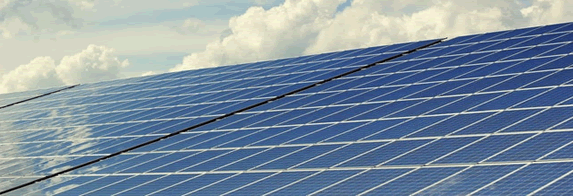Cloudy Future for Solar?
Proposed US tariffs leave solar industry in limbo.

Solar power is now the fastest-growing source of energy in the world. The International Energy Agency reports that, in 2016, solar photovoltaics grew faster than any other fuel, with almost 165 gigawatts coming online globally. Furthermore, prices are dropping for solar-generated energy: In 2016, auction prices for solar energy hit a record low of three cents per kilowatt-hour. This week, that number may have fallen even lower, to 1.79 cents per kilowatt-hour, as Saudi Arabia’s Sakara solar power plant attracted record low bids to supply solar-generated power.
“What we are witnessing is the birth of a new era in solar PV,” said Fatih Birol, executive director of the IEA. “We expect that solar PV capacity growth will be higher than any other renewable technology through 2022.”
However, some observers say that the recent boom we’ve seen in solar purchases has been created under pressure, with buyers anxious to purchase before expected changes to regulations.
One regulatory move in particular could stifle the market’s growth in the US and beyond, thanks to a contentious relationship between the US and China. China is a dominant manufacturer of panels, both for export and for its own domestic needs. The manufacturing center has paid a heavy environmental price for its coal-powered economy. Beijing’s air pollution is now so toxic that a heavy shroud of gray smog permanently hangs over the city. One report described Beijing’s atmosphere as almost “uninhabitable for human beings.” Residents cope by wearing air filtration masks and moving from one filtered airspace to another through protective airlocks. The World Health Organization projects that lifespans in China will be shortened by three years due to severe air pollution. Similarly, in car-loving Los Angeles, lifespans are cut by six months for the same reason.
These statistics have inspired China to pursue an ambitious rollout of photovoltaics, and in 2016 the country led the world with more than 40% of the world’s growth in renewable capacity. By introducing smaller, more efficient, and more affordable solar panels to the marketplace, China’s efforts to curb pollution influenced growth across the global solar industry, making solar an affordable option around the world — while at the same time making it difficult for manufacturers in other countries to compete. China’s cheap panel exports now dominate the solar industry in the US and around the world.
In September, the US International Trade Commission declared that imports of solar panels from overseas hurt the small US solar panel industry, a ruling that paves the way for President Trump to implement tariffs and other trade barriers in an attempt to advance the interests of American manufacturers. Suniva and SolarWorld, foreign-owned companies that manufacture panels in the United States, asked the US government to impose four years of tariffs of 25 cents per watt on solar cells and 32 cents per watt on panels made overseas, plus either a price floor on panels or an import quota.
However, the US solar installation industry opposes the tariffs. Affordable panels have been a boon for construction and technical jobs as solar farms and rooftop systems grow in the US. The Solar Energy Industry Association (SEIA) argued that adding tariffs would increase prices and hurt demand, impacting installation companies and manufacturers and leading to widespread job losses. US jobs in the solar industry expanded 17 times faster than the overall economy last year, with more than 260,000 people now employed in the US solar industry, mainly in installation, with others in sales, R&D, project development, and manufacturing. GTM Research estimates that more than half of all projected solar installations from 2019 to 2021 would be cancelled if Trump imposes the tariffs.
“These job losses are far, far in excess of any limited job gains the domestic cell and module industry might obtain based on optimistic projections,” said SEIA attorney Matthew Nicely.
Investors are also concerned that adding tariffs could disrupt the entire solar industry. The Motley Fool projects that costs on every residential, commercial, and utility solar project would rise, leading to cancellations and impacting companies ranging from installers and manufacturers to companies that provide materials such as films, tiles, and connectors.
The ITC has until November 13 to issue its recommendations, after which point Trump has 60 days to make a ruling. Until then, the solar industry remains on standby.
- Where in the World is Amphenol LTW’s Luc Kan? - April 23, 2024
- TE Connectivity’s Sustainability Efforts Pay Off - April 23, 2024
- What is a VGA Connector? - April 23, 2024





